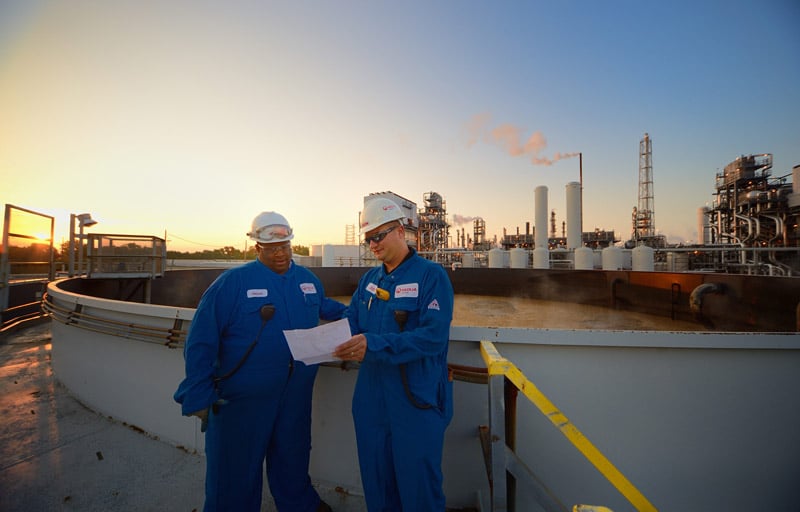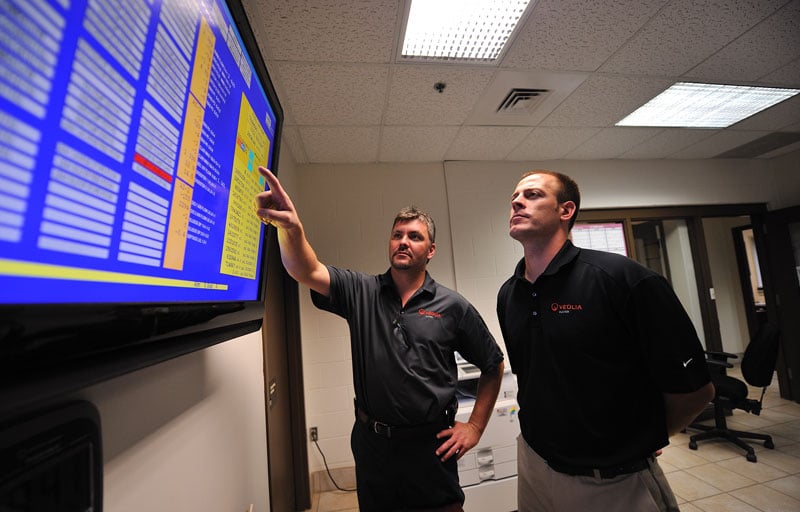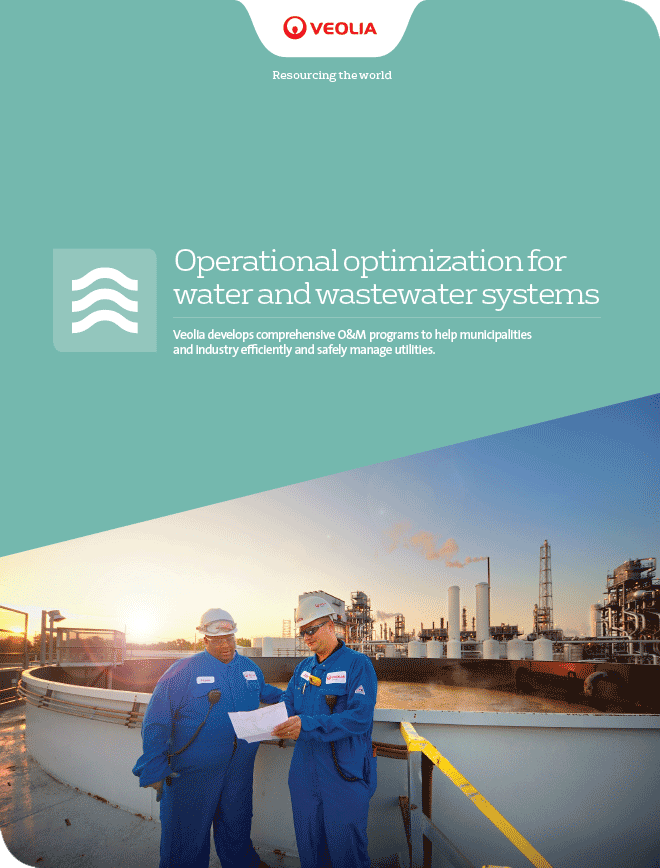Just as routine check-ups with a physician are important to maintaining personal health, complex wastewater treatment systems require regular attention and monitoring to ensure optimal performance.
This is particularly the case with biological wastewater treatment systems used in industrial facilities, such as refineries. While many studies have been published regarding biological treatment for municipal wastewater, there is less public information available for industrial applications, as each system is uniquely built for the process and business.
Unlike physical or chemical treatment solutions, the biomass (i.e., bacteria), which serves as the workhorse of biological systems, is often highly dynamic and sensitive to abrupt changes in influent conditions. This creates challenges and uncertainties for plant operators when it comes to ensuring compliance with effluent permits.
We examine steps operators can take to maintain the health of their biological wastewater treatment systems, and discuss why establishing a baseline of performance is so important.
Biological wastewater treatment system challenges
It is no coincidence that the first thing every doctor does when you go in for a routine health check-up is measure your vitals (e.g., heart rate, blood pressure, breathing, etc).
Although it may seem somewhat pointless, especially if you do not feel unwell, the vitals are crucial to establishing a baseline that is representative of your body in its normal state. Measurements that fall outside your normal range may indicate an underlying problem. The physician can then order more comprehensive tests, such as bloodwork, to investigate further and determine the root cause.
An industrial wastewater biological treatment system is similar in that there are certain health parameters that should be monitored in order to baseline how the system and biomass perform.
Unlike municipal applications, where wastewater volume and composition remain relatively stable throughout the year, an industrial site’s wastewater composition and flow can change rapidly and dramatically depending on the season, the production inputs of the operator, presence of cleaning chemicals, etc.

In physical chemical treatment systems, stoichiometric dosages can quickly be increased or decreased to ensure that the pollutants in influent are consumed or made innocuous. However, biomass is typically much slower to react/adapt, and the treatment capacity of the system can be quickly overwhelmed if measures are not taken to accommodate abrupt changes in flow or influent chemistry. This is particularly the case in biological systems with nitrifying bacteria, which are highly sensitive and slow-growing.
Although the specific variables that will require daily monitoring to develop a representative baseline will vary from system to system, there are obvious parameters that should be part of any system health checklist. Some of these include:
- Qualitative observations (e.g., mixing patterns, foaming, colors, odors, viscosity, etc.)
- Flow splits (i.e., food distribution)
- In-tank/basin pH
- Dissolved oxygen
- Alkalinity
- Oxidation/Reduction Potential (ORP), particularly if anoxic zones are used for nitrogen removal (i.e., denitrification)
- Mixed liquor suspended solids (MLSS) and mixed liquor volatile suspended solids (MLVSS)
- Sludge Volume Index (SVI)
- Specific Oxygen Uptake Rate (SOUR and/or Specific Denitrification Rate (SDNR)
Optimizing system performance
By using the above-listed parameters to establish a normal range of how the biological system performs, operators can then begin to implement proactive strategies aimed at improving the overall health of the biomass and optimizing system performance. This can yield a number of benefits that impact the plant’s bottom line, such as reduced energy consumption of regenerative blowers, less sludge generation and associated disposal costs, fewer surcharges from non-compliance with discharge permits, etc.
In many cases, operators may be able to enhance system performance by taking very simple steps, such as maintaining proper and consistent loading rates to avoid a “feast or famine” feeding routine.
Simply maintaining proper communication channels with the industrial facility’s operator can also go a long way in preventing problems. For instance, if a biocide is going to be introduced in the production plant for cleaning or disinfection purposes, the wastewater treatment plant can prepare by making sure there is enough volume in the EQ tank. Influent could also be diverted to a calamity tank, where it is diluted and introduced into the system slowly, thus avoiding toxic shock to the biomass.
Other changes in production inputs should also be communicated to the treatment plant operator. Unbeknownst to the producer, the introduction of a new grade of raw material or blend of crude oil may result in a change in the influent pH or alkalinity. In the case of food and beverage manufacturing facilities, slugs of solids, fat, oils or grease can hinder solids-liquid separation and mixing. It can also “plug up” attached growth media and reduce oxygen transfer.
All of these negatively impact the efficacy of the biomass, and increase the likelihood of pollutants making their way into the effluent discharge.
Enabling preventative maintenance
In addition to improving treatment performance and efficiency, baselining system operation makes it possible to leverage data to detect deviations or abnormalities that may indicate a problem or deficiency in the biological process. Targeted measures can then be implemented to remedy the issue before it results in a surcharge or equipment breakdown.

Advanced analytics can be applied to data to identify underlying patterns and long-term performance trends. In this way, plant operators can transform their maintenance strategies from reactive to predictive.
Industrial organizations that possess the required resources and expertise may wish to perform monitoring and data analysis internally. However, it is often to the plant operator’s benefit to outsource them to an expert third-party. In such cases, the service provider can perform data collection and analysis remotely.
Outsourcing transfers responsibility of the biological water treatment and wastewater treatment process to a company with domain expertise in operation and maintenance. The operator can then dedicate critical manpower in management, engineering, operations, and maintenance to core production activities.
Additionally, structured agreements underpinned by performance guarantees place responsibility on the service provider to manage the cost and risk of delivering wastewater services within a fixed fee structure. This protects the producer from unanticipated expenses. All needs related to staffing and maintenance can be managed by the service provider, making system performance and operating costs more predictable.
Listening to what your biological treatment system is telling you
Much like a person, the biomass/bacteria at the heart of an industrial biological wastewater treatment is a living organism that requires frequent checks to ensure health and performance.
Unlike a person, however, the biomass cannot verbalize what it needs to grow, thrive, and perform its function. The only way to determine that is to collect data and develop a baseline for operation. Once there is visibility as to how the treatment system is performing, measures can be taken to optimize feeding patterns and operation of energy-intensive equipment, such as mixers, aerators, etc.
The ultimate objective is to maintain stability of the biomass so that process upsets and associated loss in revenue from production downtime can be avoided.



